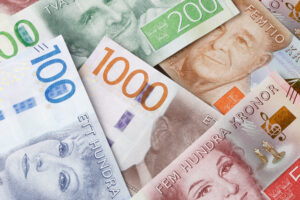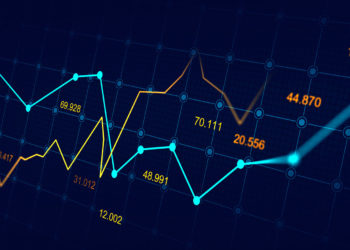Despite spiraling property prices, rising inflation and a record growth in household lending according to national statistics the latest forecast from the central bank of Sweden (Riksbank) is an unchanged repo rate for the coming years.
Rapidly rising energy prices and global demand, in combination with supply constraints and logistics problems, have led to a rapid increase in consumer prices in most areas. In the near future, the Riksbank’s inflation forecast has been revised upwards, mainly because electricity prices have risen unexpectedly sharply.
Swedish inflation, which in recent months has been fairly close to the inflation target of 2 per cent, is expected to be higher than 2 per cent in the next year, before falling again. Underlying, more trend-oriented, inflation is lower and it will take another couple of years before core inflation is estimated to be close to 2 per cent more permanently. Expansive monetary policy is a prerequisite for inflation to be close to target even in the short term. The Executive Board has therefore decided to keep the repo rate at zero percent. It is expected to remain at zero percent throughout the forecast period, which extends to the third quarter of 2024.
The Riksbank will also continue to buy securities in 2021 according to previous decisions and the Executive Board’s forecast is that the holding will be approximately unchanged in 2022.
Official report shows increasing debt burden for Swedish Households
the Swedish market for consumer loans has been growing faster than wages for an extended period of time and are now starting to play an increasingly important role in Swedish household finances. They now make up a fifth of households ‘total loans but account for more than half of households’ loan payments in interest and repayments. Large loans are growing but the smallest loans are growing faster.
Several borrowers have payment problems shortly after the loans have been granted and the problems are greater among young people than older people, a report from Swedish Financial Supervisory Authority (FI) on Swedish Consumer Loans shows.
For the third year in a row, FI has mapped the market for consumer loans by studying 320,000 borrowers of unsecured loans, car loans, account and card credits and invoice purchases from 36 different companies. Most consumer loans are small, have high interest rates and short maturities.
The report shows that large loans, over SEK 250,000 (£21 000), have increased significantly in recent years. This period has been characterized by a strong economy and low interest rates. In addition, the mortgage ceiling and the amortization requirement may have contributed to large consumer loans being used to a greater extent for housing purposes and other purchases. Small account and card credits as well as invoice purchases have increased even faster, from around SEK 4 billion (£ 340m), to more than SEK 50 billion (£ 4.2b), over the past ten years. The vibrant market for consumer loans have seen new participants spring up like mushrooms. Online lenders and websites like långuide.se make it easy for Swedish consumers to be approved and receive an instant unsecured loan readily available within the hour.
The report also shows risks of building up large debts. Many borrowers already have loans and many uses new loans to repay old ones. Although most loans are small, the report shows that many borrowers have payment problems. 4.5 percent of new borrowers receive a debt collection claim during the first months of the loan, which is an indication of payment difficulties.
For borrowers under the age of 25, the proportion with debt collection requirements was eight percent. Households with new consumer loans and loans already pay an average of a quarter of their income in interest and repayments. If the interest rate increases, they will have to pay an even larger share.
At the time of writing £ = 11.80 SE
Read more:
Bank of Sweden projects key rate at 0% until 2024















